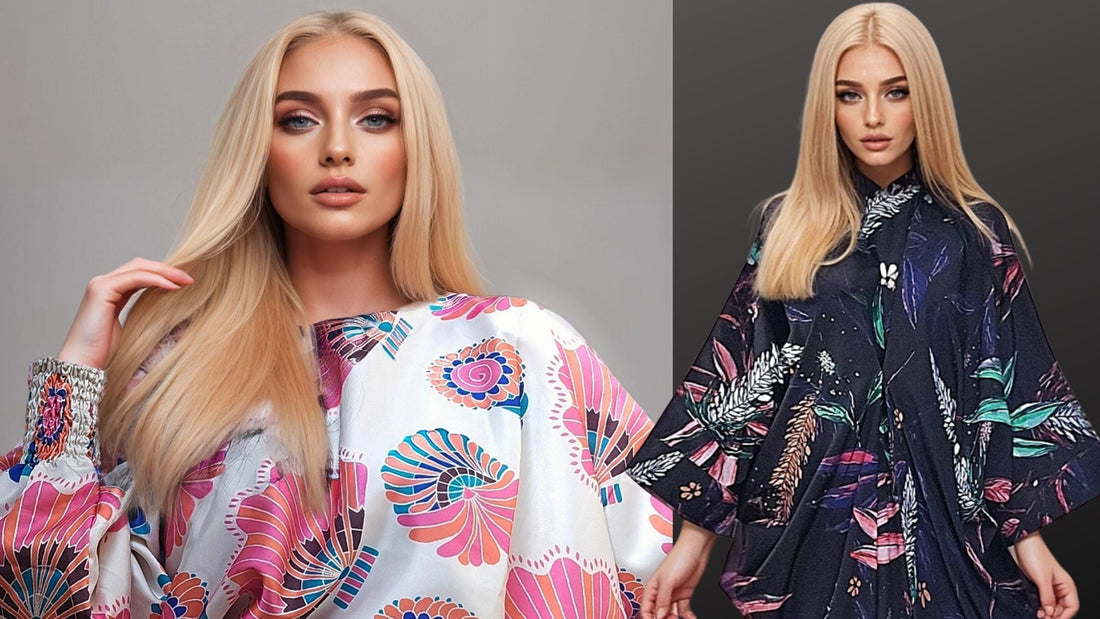
Reclaiming Luxury: A Global Heritage Beyond the West
Share this post with a friend
Reclaiming Luxury: A Global Heritage Beyond the West
When we think of luxury fashion, names like Chanel, Gucci, and Louis Vuitton dominate the conversation. For decades, these Western brands have shaped the narrative of what luxury means.
But luxury is more than a price tag or a European label.
Luxury is craftsmanship.
Luxury is heritage.
Luxury is culture.
Before the rise of Western fashion houses, Asia and Africa were the epicenters of exquisite artistry, textiles, and design excellence. Their contributions to global luxury are timeless, rooted in centuries of tradition.
At Malik & Wolff, we’re here to reclaim that narrative.
A Timeline of Global Luxury Craftsmanship
India and Pakistan
-
Indus Valley Civilization (c. 3300–1300 BCE): Known for early textile production and intricate beadwork.
-
Mughal Empire (1526–1857): A golden era for luxury textiles—brocades, silks, velvets, and embroidery techniques like zardozi and chikankari flourished.

Bangladesh
-
Muslin Production (16th–19th centuries): Dhaka’s legendary muslin, called “woven air”, was prized across the world for its delicacy and quality.
China
-
Silk Production (since c. 2700 BCE): The birthplace of sericulture, China’s silk was central to the Silk Road, symbolizing opulence and trade power.

Vietnam, Thailand, Malaysia
-
Rich textile traditions:
-
Vietnam’s handwoven brocades.
-
Thailand’s world-renowned silk patterns.
-
Malaysia’s batik art, a resist-dyeing technique dating back centuries.

-
Africa
-
West African Kingdoms (Mali Empire, 13th–16th centuries): Known for gold craftsmanship and luxurious textiles like kente and mudcloth, symbols of cultural heritage and wealth.

The Rise of Western Luxury Fashion
While these civilizations thrived in luxury craftsmanship, Western Europe entered the scene much later:
France
-
17th Century: Under Louis XIV, France established state workshops like Manufacture des Gobelins, producing luxury goods.
-
1858: The first haute couture house was founded in Paris by Charles Frederick Worth.
Italy
-
Post-World War II (1950s): Italian fashion flourished, with designers like Valentino and Gucci (established 1921) shaping Italian luxury.
USA
-
20th Century: American luxury emerged through ready-to-wear and sportswear, led by brands like Ralph Lauren and Calvin Klein.
Redefining Luxury at Malik & Wolff
At Malik & Wolff, we challenge the Eurocentric definition of luxury.
-
Our designs are created in-house, rooted in global artistry.
-
We employ skilled artisans and tailors in India and Pakistan, who bring our visions to life through fabric printing, embroidery, and tailoring—carrying forward centuries-old techniques.
-
Every artisan and team member is ethically paid, reflecting the true value of craftsmanship.
-
We embrace slow fashion—no mass production, no shortcuts. Every piece is created with care, intention, and respect for heritage.
Yes, there’s a price point—because true luxury means paying fairly for the time, skill, and artistry involved.
But we believe in luxury that’s accessible, ethical, and meaningful, yet we still make them affordable in comparison.

Luxury Is Global
Luxury doesn’t belong to the West. It belongs to all of us.
It’s time to reclaim the narrative and celebrate the artisans of Asia, Africa, and beyond—those who’ve been crafting luxury for millennia.
Join us at Malik & Wolff in redefining what luxury means.
We love to hear your thoughts, how do you feel about the luxury market ?
